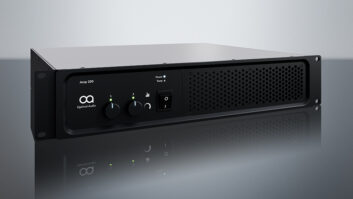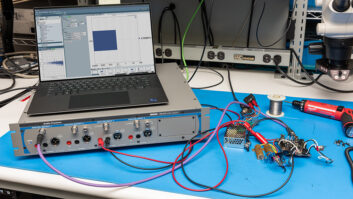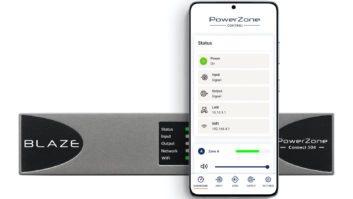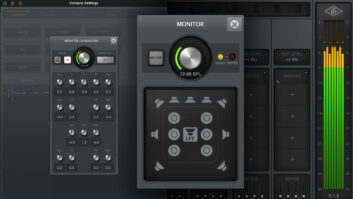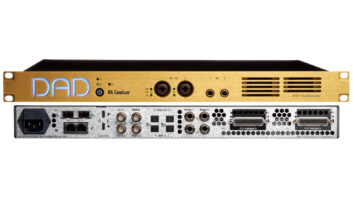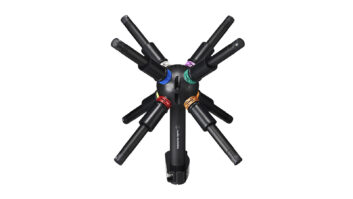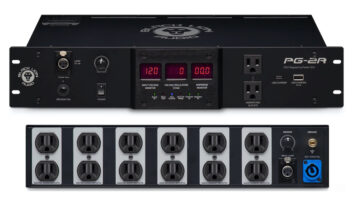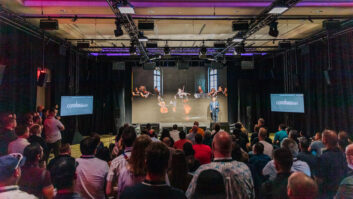QSC Audio’s second generation of lightweight amplifiers, the PLX Series, was introduced at the 1998 NSCA show in Las Vegas. With a two-rackspace form factor that’s only 13 inches deep-five inches less than QSC’s original PowerLight (PL) Series of amps-the PLX Series will fit comfortably in any amp rack. And since each amp weighs just 21 pounds, one person can easily lift a rack of four. You can expect to see a lot of these.
The four PLX models are the 1202, 1602, 2402 and 3002, model numbers that refer to each 2-channel amp’s total power output into 2 ohms (600, 800, 1,200 and 1,500 watts per channel, respectively). The two lower-powered models are Class AB amps, while the 2402 and the 3002 are efficient two-step Class H designs. At 4 ohms, the PLX 2402 delivers 125 watts more than the PowerLight 1.8’s 700 watts, and the 3002 has an extra 350 watts. However the PowerLight 1.8 has 34 dB of gain, while all the PLX amps have 32 dB of gain, so getting the extra power out of the PLX means you’ll be hitting them with a bit more signal. Four-step LED metering indicates -35, -20 and -10dB input signals in green, plus true clip and protection in red. Two yellow LEDs show bridge-mono operation and parallel input mode status. Another nice touch is the comfortably designed gain knobs, which are detented in 2dB increments.
We racked up two 1602s and two 3002s, along with a TDM CX-4 crossover to bi-amplify a four-mix monitor system, and used them to power wedge monitors, each loaded with a JBL 2226H and a 2426J compression driver. The 3002’s 8-ohm rating of 625 watts proved ample for the 15s, and the 1602’s 350-watt 8-ohm rating meant the amp could deliver over 150 watts to the 16-ohm 1-inch high-frequency drivers without clipping. We found no problems when doubling up two floor monitors on a single amp. In fact, since the amps are 2-ohm capable, three or four of these wedges could be run on a single mix.
The PLX has the same studio-quality performance as the original PL, including a virtually inaudible noise floor (108 dB) and ultra-low distortion (0.03%) on 8- and 4-ohm loads. If you compare specs, however, you’ll notice the PLX has a slightly higher damping factor, which may account for the PLX amps sounding a skosh better to my ear.
On the rear panel, separate XLR and 11/44-inch balanced inputs allow for loop-through connection of multiple amps. A recessed row of DIP switches next to the inputs selects bridge mode, or parallels the inputs. There are also facilities to select a 30 or 50Hz highpass filter and a channel clip limiter, to increase usable power and protect speakers. A variable-speed fan cools each amp from back to front.
The PLX has some nice touches that won’t mean much unless you spend time in the back of a rack. The touch-proof binding posts found on all QSC amps accept banana plugs-not just the usual way, but through their sides as well, allowing the posts to tighten and secure them. PLX Series binding posts are in a vertical row, making for convenient connections when several amps are stacked in a rack. Also, the two Neutrik Speakon connectors are wired with their first pair of conductors each to one channel’s output. A hidden feature is that the SECOND pair in the first Speakon is also wired to the second channel. When using a single PLX for bi-amp applications (channel 1 for lows), you can simply connect a single Speakon cable from amp to speaker.
The data port on the original PL Series is omitted, but there are users who don’t need or want the advantages it offers. The only thing I didn’t like about the PLX was its goofy handles. Other than that, it sounds like a better amp at a great price, with clean, clear tonality that reminds me of a studio reference amplifier.
QSC’s PLX Series amps come with a three-year warranty. List prices are: 1202, $798; 1602, $1,198; 2402, $1,498; and 3002, $1,798. QSC plans to announce a big brother, the PLX 3402, by the time you read this.
QSC Audio Products Inc., 1675 MacArthur Blvd., Costa Mesa, CA 92626. Phone 714/754-6175; Web site: www.qsc-audio.com.
